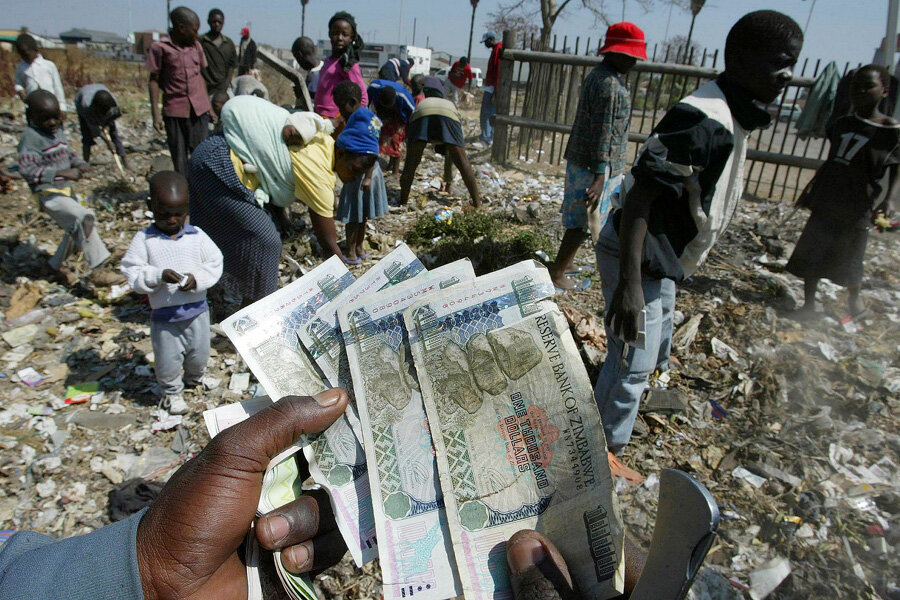At long last, Zimbabwe says goodbye to its hyperinflated currency
Loading...
After six years of hundred-trillion-dollar bills, Zimbabwe is finally saying goodbye to its national currency
The national Reserve Bank announced Friday it would be phasing out the Zimbabwean dollar in favor of formalizing the multicurrency system it’s had to rely on since 2009, according to BBC.
The national currency has long been all but abandoned, with locals making far more money hawking bills as souvenirs. In 2011, the hundred-trillion-dollar note – the highest denomination ever produced – was able to bring returns of 15 times its official value on eBay, The Wall Street Journal reported.
Starting June 15, Zimbabweans will be able to exchange their notes for US dollars, which were adopted by the government as the official currency six years ago. But residents shouldn’t get too excited – the bank announced that accounts with balances ranging anywhere from zero to Z$175 quadrillion will only be given “a flat US$5,” according to the Financial Times.
So what’s the significance of demonetizing the Zimbabwean currency? For years, the US dollar and South African rand have reigned supreme, while vendors have also been accepting currencies from six other countries: Australia, the UK, Botswana, China, India, and Japan.
Until now, residents have been relying on the remittances of those working abroad for access to other currencies, and whether this will change with the demonetization of the Zimbabwean dollar remains to be seen.
The government’s move may be an attempt to bolster an assurance to the public that it is moving forward. Over the last six months, it introduced a new strain of $10 million worth of “bond coins," which so far has been relatively unsuccessful, as consumers “fear that it is the first step in the reintroduction of the Zimbabwe dollar,” reported the BBC.
The shortage of coins has also been allowing many retailers to round up prices or give consumers change in the form of sweets or pens.
Zimbabwe's national currency, which has experienced inflation rates as high as 231 million percent, began its deadly course in 2000, when President Robert Mugabe’s administration began seizing white-owned commercial farms.
The economy was particularly punctured in 2006, when the government revealed that it had paid the International Monetary Fund $221 million to settle an arrears and maintain its membership in the organization. It experienced a period of rebound in 2009, after President Mugabe agreed to a national unity government with the opposition party, Movement for Democratic Change (MDC).
This allowed the country to enjoy an average GDP growth rate of 7.5 percent until 2013, when Mugabe won reelection amid mounting tensions between his Zanu-PF party and the MDC.
The economy has returned to fragility under Mugabe’s leadership, who last year was once more reelected for another five-year term.
In its African Economic Outlook for 2014, the African Development Bank Group wrote, “Zimbabwe is experiencing a structural regression, with the acceleration of deindustrialisation and informalisation of the economy.” Among key challenges are corruption, government bureaucracy and policy inconsistency, it said.








